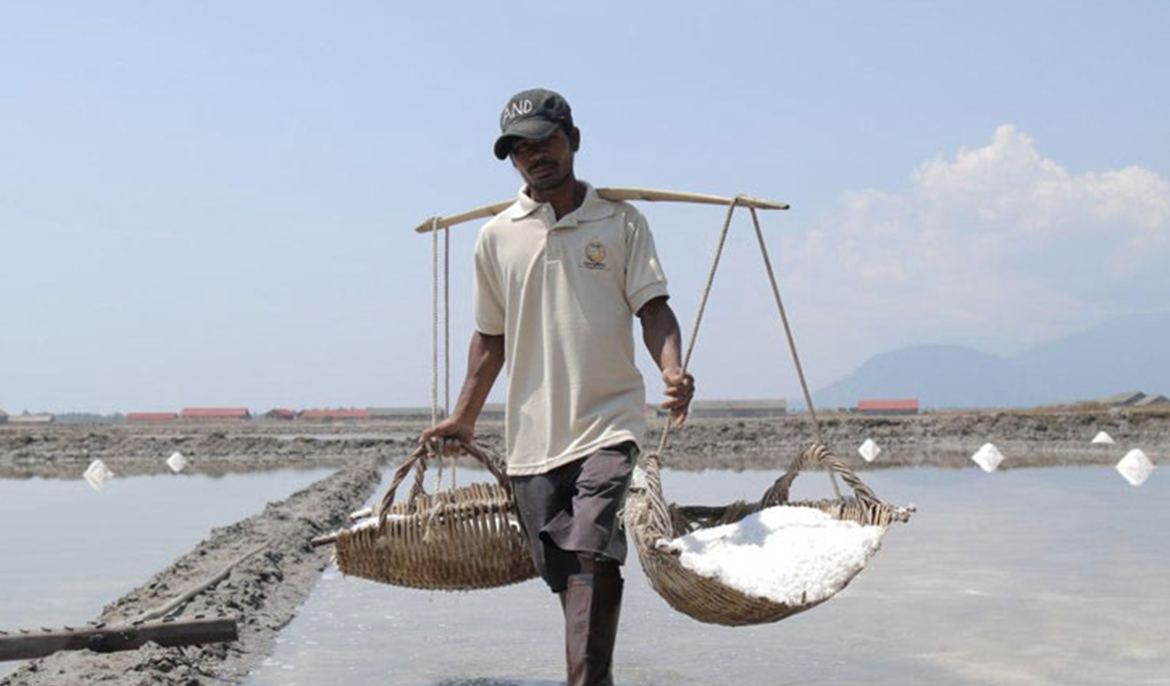Kampot and Kep provinces produced 81,154 tonnes of salt last year, 148.9 percent increase over 32,900 tonnes in 2022,
a Ministry of Industry, Science, Technology
and Innovation report showed. “ Of the total salt yield
in the two provinces in 2023, 64,732 salt were sold out. There were not any imports of salt from abroad,” read the report.
Currently, there are 3,987 hectares of salt fields, of which 3,489 hectares are located in Kampot province and the rest in Kep province with a total 191 salt farmer groups.
Cambodian Prime Minister Hun Manet directed the Ministry of Industry, Science, Technology, and Innovation to maintain a vigilant focus on enhancing the management and conservation of salt fields in Kampot-Kep province, which are ancestral heritage.
“We must enhance salt production, recognized by the government as a strategic commodity,” he said at the industry ministry’s closing ceremony of the annual meeting held on Wednesday.
According to the ministry, a working group is working to map the salt field to protect the area and the establishment of an association functioned to manage the salt production is underway.
In the unfavourable weather of heavy rain pours, salt production decreased, requiring the Kingdom to make salt imports from abroad to supply the domestic market.
Salt is currently priced at 10,000 riels ($2.5) to 12,000 riels ($3) per 50kg sack.
The Ministry of Industry, Science, Technology and Innovation has said that Cambodia needs between 700,000 and 100,000 tons of salt per year to meet domestic demand. In addition to local salt, the provinces bordering Thailand and Vietnam also import salt for sale.
In 2014, 2015 and 2016, Cambodia harvested more than 100,000 tons of salt per year. However, output has been steadily declining since 2017 due largely to unfavourable weather of heavy rainfalls. khmertimeskh



